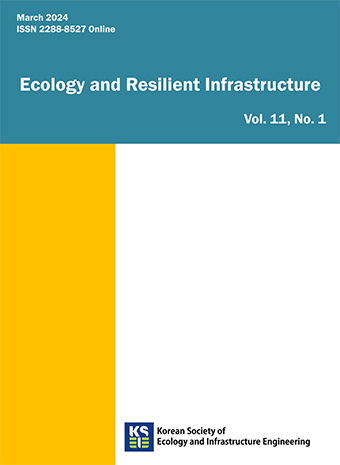Original Article
Abstract
References
Information
- Publisher :Korean Society of Ecology and Infrastructure Engineering
- Publisher(Ko) :응용생태공학회
- Journal Title :Ecology and Resilient Infrastructure
- Journal Title(Ko) :응용생태공학회 논문집
- Volume : 7
- No :4
- Pages :353-365
- Received Date : 2020-12-09
- Revised Date : 2020-12-14
- Accepted Date : 2020-12-14
- DOI :https://doi.org/10.17820/eri.2020.7.4.353




 Ecology and Resilient Infrastructure
Ecology and Resilient Infrastructure







